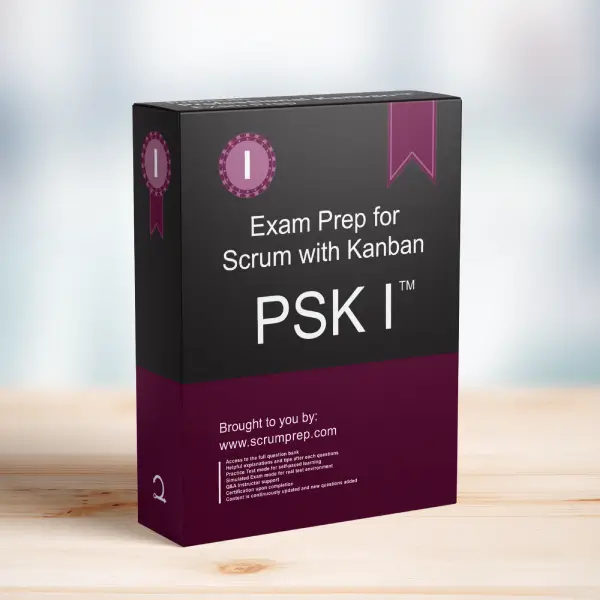Understanding Batch Size and Sprint Length in Scrum with Kanban
In Scrum with Kanban, it’s important to differentiate between batch size and Sprint length, as they serve different purposes in managing workflow and delivering value.
Exam Question
True or False: Batch size is the same as the Sprint length when using Scrum with Kanban.
A. True
B. False
Correct Answer
B. False
Explanation
Correct Answer
B. False:
Batch size and Sprint length are not the same when using Scrum with Kanban. Batch size refers to the amount of work or number of work items that are processed together through a particular stage of the workflow, while Sprint length refers to the fixed timebox, usually 1 to 4 weeks, within which a Scrum Team works to deliver an Increment of the product. In Scrum with Kanban, the batch size can vary depending on how work items are grouped for efficiency, while the Sprint length remains a consistent time period.
Differences Between Batch Size and Sprint Length
- Batch Size:
In Kanban, batch size is flexible and can be adjusted based on the flow of work. It represents how much work is moved through a specific process at one time. Smaller batch sizes generally lead to faster feedback and quicker iteration, while larger batch sizes may increase efficiency in terms of reduced transaction costs.
The batch size can be independent of the Sprint length and can be adjusted to optimize flow and reduce cycle time. - Sprint Length:
Sprint length in Scrum is a fixed timebox, typically ranging from one to four weeks. The purpose of the Sprint is to deliver a potentially shippable product Increment by the end of the timebox.
The Sprint length is a constant duration that does not change based on batch size. It serves as a regular cadence for planning, review, and retrospective activities.
Importance of Understanding the Distinction
- Workflow Optimization: Understanding that batch size and Sprint length are different allows teams to better optimize their workflow. Teams can experiment with different batch sizes within the same Sprint length to find the most effective way to deliver value.
- Flexibility: Kanban practices, such as adjusting batch size, provide flexibility in how work is managed and flow is maintained, while the fixed Sprint length in Scrum ensures regular inspection, adaptation, and delivery of value.
Relevance to the PSK I Exam
Understanding the distinction between batch size and Sprint length is important for the PSK I exam. It demonstrates knowledge of how Scrum and Kanban practices can be integrated to improve workflow and value delivery.
Key Takeaways
- Batch size refers to the number of work items processed together, while Sprint length refers to the fixed time period within which work is completed in Scrum.
- Batch size can be adjusted to optimize workflow, while Sprint length remains constant to provide a regular cadence for the team.
- Recognizing the difference between batch size and Sprint length allows for better workflow optimization and value delivery in Scrum with Kanban.
Conclusion
Batch size is not the same as Sprint length when using Scrum with Kanban. Understanding the distinction between these two concepts is key to optimizing workflow and delivering value effectively. For more information on preparing for the PSK I exam, visit our Professional Kanban PSK I™ Exam Prep.


